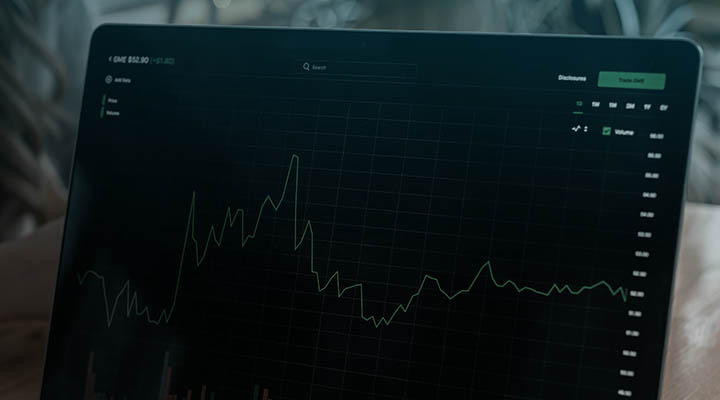Looking back, I think it’s fair to say that 2022 was a particularly challenging year for the UK’s energy industry. It felt very much felt like a year of plate spinning for all organisations, with a multitude of high-priority projects and focus areas. From the introduction of Ofgem’s Faster Switching programme, to the continued focus on customer migration (after 28 energy suppliers went bust in 2021, in many cases taken over by larger suppliers), and the pressure of the energy crisis, I’m not sure that 2022 will be a year that is fondly remembered.
It has been a year, to borrow the sporting phrase, of ‘playing what’s in front of you’. The urgency and focus required to address the aforementioned challenges has stifled innovation and put a red line through each item on technology leaders’ 2022 wish lists. The energy crisis is ongoing, but it is clear that energy suppliers must continue to evolve and innovate if they are to survive.
With this in mind, here are the four key technology trends that energy industry players should pay attention to and look to capitalise on in 2023.
Desire for Increased Automation & Efficiency
The back-office estate, as well as many back-office processes, are still manual and therefore extremely time intensive for many energy suppliers. Innovation and transformation over the last few years have been focused more on the customer facing aspects of the energy retail lifecycle, and rightly so. But with margins tighter than ever and a significant increase in customer debt, 2023 is a year to maximise operational and process efficiency.
From metering data to reconciliation and billing, there are huge opportunities to automate these manual processes and provide excellent cost savings – without limiting efforts to the use of Robotic Process Automation (RPA). RPA, of course, has its place, particularly when providing quick wins, bridging the gap between legacy technology and innovation, and focused, specific use cases to increase maturity. However, when it comes to automation, much of the critical work can be defined by better process design, evolving towards a data-driven business.
For energy companies, establishing clearly-defined goals and objectives at the organisational level will enable not only tactical solutions, but opportunities for automation to support wider strategic objectives. Furthermore, with the advancement of cloud technologies, it has never been easier to release new solutions (be they RPA, AI, data, or software engineering). Microsoft Azure, AWS and Google Cloud Platform each offer a suite of automation, AI, data and CI/CD tools that can be simply and easily integrated as part of an organisation’s existing cloud estate.
Market half Hourly Settlements present an opportunity beyond just compliance
Market-wide Half Hourly Settlements, or MHHS as it’s often known (because the industry needs another acronym, right?), is a key enabler of the flexibility to support net-zero and the energy transition. The MHHS Programme will contribute to a more cost-effective electricity system, encouraging more flexible use of energy and helping consumers lower their bills. Ofgem’s analysis predicts that MHHS will bring net benefits for consumers of between £1.6bn and £4.5bn over the period 2021 - 2045. Elexon, acting as SRO for the programme, is well into its internal transformation programme to facilitate MHHS; however, many of the other 180 market participants, with the other priorities mentioned previously dominating 2022, have not given this much thought yet.
The concern is that the success of the programme is reliant on all market participants being ready for the industry testing and subsequent migration phase. Market participants must now accelerate the delivery of their own MHHS programmes in order to be compliant and help the industry successfully deliver this initiative, which cannot come soon enough from a consumer perspective.
Simply being compliant, however, should not be the focus here. MHHS presents significant opportunities for innovation, and energy companies should therefore view this as an opportunity to develop new products and services to drive maximum benefit to their customers.
A Role for Data Science in One Time Resolution
Data science is often seen as a tactical solution to a particular problem. We’ve seen it very recently in helping to proactively identify customers who are financially or clinically vulnerable due to the energy and cost of living crisis. This often results in the proliferation of data science teams, solutions, and estates across businesses with little to no strategic oversight.
However, embedding data science practices into project delivery and having an AI strategy holds the key to enhanced customer support, customer satisfaction, reduced administration, and one-time resolution. One-time resolution is another way that energy retailers can reduce their customer service overhead whilst improving customer satisfaction and reducing customer churn. Data science has a key role to play in this process and there is no shortage of potential use cases. From customising and personalising help pages and chatbots via the website and customer apps, to leveraging the vast amounts of customer data available to predict customers’ needs before the point of contact, this would dramatically reduce the amount of time spent by customer service teams to resolve issues.
This in turn would help energy suppliers streamline operations and reduce overheads and spend. This will be crucial as margins continue to be squeezed, and customer debt mounts as support continues to be offered to customers throughout the energy crisis via payment plans, reduced monthly direct debits, and each energy supplier’s own specific packages of support.
A sustainable Technology Estate Supporting Sustainable Customer Choice
As well as the need to take significant steps towards realising net-zero ambitions, other factors are sharpening the focus on reducing the environmental impact of technology and managing technology usage more intelligently. Technology is already a significant part of the carbon footprint of large energy suppliers, and this is only set to increase with the growing ‘digitalisation towards decarbonisation’ agenda, including data intensive implementations such as MHHS and the build out of infrastructure supporting time of use tariffs and portability/use of customer data.
Emissions measurement capability has improved substantially in recent months, and this is expected to continue through 2023. Improving cloud-based tooling (e.g., Microsoft Cloud for Sustainability) provides opportunities to implement emissions observability at limited additional cost. The recent (December 2022) release of the Software Carbon Intensity Specification, providing a standardised reporting framework, further incentivises investment and will increase the range of affordable tooling options. This in turn will increase awareness amongst energy suppliers of the impact time and location can have on energy intensity of resource usage and inform cloud management.
In line with broader cross-industry focus, we expect to see green software education and the implementation of sustainable technology strategies move up the energy sector technology agenda in 2023, with an immediate focus on stopping the problem from getting any worse through better software development practices and governance.
More specifically for the energy industry, there will likely be a focus on how to balance the environmental impact of new customer functionality with the trend towards sharing personalised data insights. Customer demand for more insights into how they can reduce their own energy usage will continue to increase, but sustainability criteria will be increasingly factored into non-functional requirements, key design decisions, and technology selection to limit the environmental impact of these new features.
Conclusion
It is crucial that energy organisations focus on impactful, transformative digital initiatives in 2023. There is a real opportunity to capitalise on the readily available automation capabilities of leading cloud providers to automate processes and improve efficiencies. Similarly, MHHS represents not just a regulatory obligation, but an opportunity to deliver huge benefits to customers – something that could prove a real competitive advantage. Innovative use of data science could allow providers to better serve the needs of their customers and therefore improve retention, and a more sustainable approaches to the technology stack will be crucial to helping organisations achieve their net-zero ambitions.
With the cost-of-living crisis and general energy market upheaval due to continue for the foreseeable future, now is the time for energy companies to look beyond the short term and invest now in the technology solutions that will help them and their customers weather the ongoing macroeconomic instability.
If you’d like to learn more about the solutions BJSS can offer to organisations in the energy sector, click here.
Published
April 29, 2024Reading time
5 minutesRelated posts





